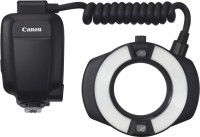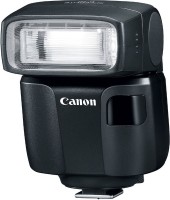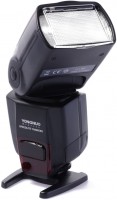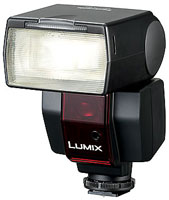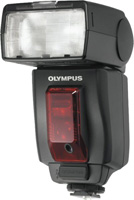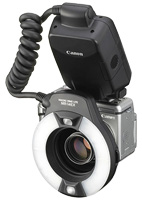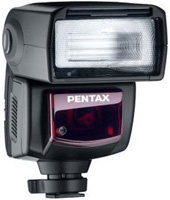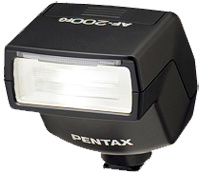Flashes Yongnuo
Choose Model camera and choose flash ↓ Apply | All Flashes Advanced filters → |
You might be interested in
Articles, reviews, useful tips
All materials
Guide to the main types of filters in photography
Types and methods of application of light filters in the genre of photography

Everything is relative: interchangeable lenses for cameras from third-party manufacturers
Lenses from alternative brands: money down the drain or an increase in image quality?
Flashes: specifications, types
Type
— Ordinary. Classic external flash. Usually, it is installed in the "hot shoe" of the camera. This is a versatile type of flash that is suitable for a variety of shooting applications, from portraits to subjects at long focal lengths.
— For macro photography. Special flashes are designed for use when photographing objects at short distances (macro photography). Such flashes, usually, are made in the form of a ring and are mounted on the front of the lens, which makes it possible to achieve uniform illumination of the subject. The connection is made through the "hot shoe" of the camera. It is worth noting that such flashes are not intended for general shooting due to their low power.
— Combined. Solutions from this category are usually kits that include two types of flashes at the same time — normal and macro. For details on each of these varieties, see the corresponding paragraphs. And the key difference between such a kit and two separate flashes is that both lamps, usually, are connected through one “hot shoe” — most often a regular flash is attached to this connector, and a macro lamp is already connected to it.
— On- camera light can be described as an analogue of a flash, used mainly when shooting video. Hence another popular name for such devices is “video flashes”. However, this name is not entirely correct due to the fact that the on...-camera light does not work in pulses, but in a constant mode. Simply put, this is a specialized spotlight mounted on the camera.
— For macro photography. Special flashes are designed for use when photographing objects at short distances (macro photography). Such flashes, usually, are made in the form of a ring and are mounted on the front of the lens, which makes it possible to achieve uniform illumination of the subject. The connection is made through the "hot shoe" of the camera. It is worth noting that such flashes are not intended for general shooting due to their low power.
— Combined. Solutions from this category are usually kits that include two types of flashes at the same time — normal and macro. For details on each of these varieties, see the corresponding paragraphs. And the key difference between such a kit and two separate flashes is that both lamps, usually, are connected through one “hot shoe” — most often a regular flash is attached to this connector, and a macro lamp is already connected to it.
— On- camera light can be described as an analogue of a flash, used mainly when shooting video. Hence another popular name for such devices is “video flashes”. However, this name is not entirely correct due to the fact that the on...-camera light does not work in pulses, but in a constant mode. Simply put, this is a specialized spotlight mounted on the camera.
LED
Flashes of this type use one or more diodes as a light source. Usually, LED-light is significantly inferior to xenon illumination in terms of luminous flux intensity, but at the same time it boasts high energy efficiency and reliability. LED flashes are mainly used as stationary lighting and are found in macro photography ( LED ring flashes) and on- camera.
Camera compatibility
Camera models that the flash can work with. Note that this parameter is usually indicated in the characteristics very approximately — only camera manufacturers are named, but there is no talk of models as such. Therefore, before purchasing a flash, it makes sense to separately clarify whether it will work normally with your camera — for example, on the manufacturer's website or thematic forums. This is especially true for devices from third-party manufacturers — for such models, the likelihood of problems is somewhat higher than for “native” flash cameras. At the same time, devices from the same company usually have the same requirements for connecting flashes, and therefore this parameter is with a fairly high degree of accuracy allows you to evaluate compatibility.
If the specifications of the flash indicate compatibility with several brands of cameras, this usually means that this model is available in several variations, each of which is designed for a different manufacturer.
It is worth noting that the "non-native" camera and flash may be quite compatible and work fine in most shooting modes. Nevertheless, support for TTL (see below) and a number of other specific functions in this case is usually out of the question, and in general, the reliability and efficiency of this combination is lower than that of a camera with a "native" flash. Therefore, it is better to choose all the same accessories with directly claimed compatibility.
Of t...he compatible cameras currently in use: Canon, Fuji, Leica, Nikon, Olympus, Panasonic, Pentax, Samsung, Sigma, Sony.
If the specifications of the flash indicate compatibility with several brands of cameras, this usually means that this model is available in several variations, each of which is designed for a different manufacturer.
It is worth noting that the "non-native" camera and flash may be quite compatible and work fine in most shooting modes. Nevertheless, support for TTL (see below) and a number of other specific functions in this case is usually out of the question, and in general, the reliability and efficiency of this combination is lower than that of a camera with a "native" flash. Therefore, it is better to choose all the same accessories with directly claimed compatibility.
Of t...he compatible cameras currently in use: Canon, Fuji, Leica, Nikon, Olympus, Panasonic, Pentax, Samsung, Sigma, Sony.
Guide number
The guide number is the main characteristic that describes the power of the light pulse of the flash. It is described as the maximum distance (in metres) at which, at ISO 100 and f/1 lens speed (aperture 1), a flash is able to illuminate an "average" subject sufficiently for a normal exposure; in other words, at what distance from the flash it will be possible to normally shoot the scene at the specified ISO and aperture.
There are formulas by which, knowing the guide number, you can derive the practical shooting distance for each specific value of sensitivity and aperture. The simplest formula used to calculate the distance at ISO 100 is: S=N/f, where S is the distance, N is the guide number, f is the aperture value. For example, for a guide number of 56 and an f/2.8 lens, this distance would be 56/2.8 = 20 m. Increasing or decreasing sensitivity by a factor of 2 would increase or decrease the specified distance by approximately 1.4 times, respectively. If you need to calculate the distance as accurately as possible, you should refer to more detailed formulas that can be found in specialized sources.
Separately, it is worth noting that the leading numbers of flashes, usually, are indicated by manufacturers for specific focal lengths of lenses. This is due to the fact that the shorter the focal length and, accordingly, the wider the viewing angle, the more light is needed to illuminate the scene being shot and the more powerful the flash pulse should b...e (at the same distance). Therefore, when choosing by the guide number, it makes sense to pay attention to the focal length indicated by the manufacturer and select a model with a power reserve — especially since guide numbers are often prescribed for rather “long-range” lenses (with a focal length of about 80-100 mm in equiv. 35 mm).
There are formulas by which, knowing the guide number, you can derive the practical shooting distance for each specific value of sensitivity and aperture. The simplest formula used to calculate the distance at ISO 100 is: S=N/f, where S is the distance, N is the guide number, f is the aperture value. For example, for a guide number of 56 and an f/2.8 lens, this distance would be 56/2.8 = 20 m. Increasing or decreasing sensitivity by a factor of 2 would increase or decrease the specified distance by approximately 1.4 times, respectively. If you need to calculate the distance as accurately as possible, you should refer to more detailed formulas that can be found in specialized sources.
Separately, it is worth noting that the leading numbers of flashes, usually, are indicated by manufacturers for specific focal lengths of lenses. This is due to the fact that the shorter the focal length and, accordingly, the wider the viewing angle, the more light is needed to illuminate the scene being shot and the more powerful the flash pulse should b...e (at the same distance). Therefore, when choosing by the guide number, it makes sense to pay attention to the focal length indicated by the manufacturer and select a model with a power reserve — especially since guide numbers are often prescribed for rather “long-range” lenses (with a focal length of about 80-100 mm in equiv. 35 mm).
Reload time
The time it takes the flash or generator (for studio flashes) to prepare for the next flash. The smaller it is, the better. This parameter is especially important for continuous shooting, when the interval between frames is small: if you often shoot in this mode, you should look for a flash with the shortest possible recycle time. Also note that the characteristics usually indicate the shortest recharge time; in some operating modes, it may be significantly more than stated.
Number of impulses
The number of flashes that the flash can fire without recharging the battery or changing batteries (see "Power"). This parameter is very approximate, because. in fact, it strongly depends on a number of factors: pulse duration, use of the display and its backlight (if any, see below), autofocus backlight (see "Features"), etc., and with replaceable batteries — even and on their quality. Often, manufacturers indicate in the characteristics the “perfect”, the maximum possible number of pulses — i.e. with their minimum duration, non-use of additional functions and even the optimal temperature regime for the battery. In reality, this figure may be lower. Nevertheless, the data indicated in the characteristics makes it quite possible to evaluate the battery life of the flash and even compare different models with each other.
Pulse duration
The duration of the pulse of light provided by the flash. This indicator can range from thousandths to hundred thousandths of a second; it is usually expressed as a fractional number with a unit in the numerator, such as 1/880 s. The human eye does not notice the difference, but in some shooting modes it can become critical. For example, to capture fast-moving scenes (such as splashing water, the flight of an insect, or the movement of machine parts) you need to choose a flash with the shortest flash duration possible — otherwise the image may be blurry.
The longest pulse duration in modern photoflashes is about 1/800 s; the minimum value can reach 1/30,000 s or even less.
The longest pulse duration in modern photoflashes is about 1/800 s; the minimum value can reach 1/30,000 s or even less.
Brightness
The standard brightness of the on-camera light (see "Type"). Usually, most of these models have the ability to adjust the brightness, so the maximum value is given in the specifications.
When shooting at a short distance, devices that are too bright can “overexpose” the scene, degrading the quality of the shooting (and it can be much more difficult to compensate for excessive brightness in post-processing than the lack of light). So when choosing for this indicator, it is worth proceeding from the specific conditions of use.
When shooting at a short distance, devices that are too bright can “overexpose” the scene, degrading the quality of the shooting (and it can be much more difficult to compensate for excessive brightness in post-processing than the lack of light). So when choosing for this indicator, it is worth proceeding from the specific conditions of use.
Number of diodes
The number of light-emitting diodes (LED) provided in the on-camera light system (see "Type").
The abundance of LEDs allows you to achieve good brightness at a relatively low cost of the entire device — there are many light sources themselves, but they are relatively cheap. However, these models can be inconvenient to carry on camera and work in tight spaces. In turn, compact lamps with a small number of LEDs are more convenient, portable and "manoeuvrable", however, they are either inferior to more "multiply charged" models in terms of brightness, or are noticeably more expensive.
The abundance of LEDs allows you to achieve good brightness at a relatively low cost of the entire device — there are many light sources themselves, but they are relatively cheap. However, these models can be inconvenient to carry on camera and work in tight spaces. In turn, compact lamps with a small number of LEDs are more convenient, portable and "manoeuvrable", however, they are either inferior to more "multiply charged" models in terms of brightness, or are noticeably more expensive.
TTL
Flash units with TTL support. TTL is an abbreviation for "through the lens", i.e. "through the lens"; this is the name of the method of measuring exposure by the amount of light that passes directly through the camera lens.
In digital photography, TTL works like a pre-flash: before the main exposure, the flash fires one or more test flashes. The amount of light coming from the object being filmed is measured by special sensors, based on these data, the control electronics sets the necessary shooting parameters, after which the actual exposure takes place. This allows you to fine-tune the camera and get an image of optimal quality. The interval between the test and operating pulses is so small that it may not be visible to the naked eye at all (especially when the flash is synchronized with the front curtain or with a slow shutter speed).
Many modern camera manufacturers have their own developments and varieties of TTL technology, respectively, differing in name: for example, Canon has E-TTL and E-TTL II, Nikon has D-TTL (in early models) and i-TTL (in later ones) , Pentax has P-TTL, etc. Support for one or another variety is directly related to the compatibility of the flash with cameras (see above), and different formats are usually not compatible with each other.
In digital photography, TTL works like a pre-flash: before the main exposure, the flash fires one or more test flashes. The amount of light coming from the object being filmed is measured by special sensors, based on these data, the control electronics sets the necessary shooting parameters, after which the actual exposure takes place. This allows you to fine-tune the camera and get an image of optimal quality. The interval between the test and operating pulses is so small that it may not be visible to the naked eye at all (especially when the flash is synchronized with the front curtain or with a slow shutter speed).
Many modern camera manufacturers have their own developments and varieties of TTL technology, respectively, differing in name: for example, Canon has E-TTL and E-TTL II, Nikon has D-TTL (in early models) and i-TTL (in later ones) , Pentax has P-TTL, etc. Support for one or another variety is directly related to the compatibility of the flash with cameras (see above), and different formats are usually not compatible with each other.
Power management
The ability to manually change the power of the light flux emitted by the flash (with a constant pulse duration, see above). This feature is present in most modern models; it allows you to set the optimal parameters for shooting, so as not to “overexpose” the frame.
The characteristics of models with power management usually indicate the levels to which it can be set. Traditionally, each next (in descending order) level corresponds to half the power than the previous one, and they are indicated by fractional numbers: 1/1 (full power), 1/2, 1/4, 1/8, etc. The features of flash power control depending on the shooting parameters are described in detail in special sources, however, anyway, the more setting levels, the more options you have for setting the optimal parameters. This is especially true for shooting at short distances, where the risk of excessive “flare” increases.
The characteristics of models with power management usually indicate the levels to which it can be set. Traditionally, each next (in descending order) level corresponds to half the power than the previous one, and they are indicated by fractional numbers: 1/1 (full power), 1/2, 1/4, 1/8, etc. The features of flash power control depending on the shooting parameters are described in detail in special sources, however, anyway, the more setting levels, the more options you have for setting the optimal parameters. This is especially true for shooting at short distances, where the risk of excessive “flare” increases.
Beam angle
The angle at which the main beam of light from the flash diverges. This parameter is not expressed directly, in degrees, but in terms of the focal lengths of the corresponding lenses, in millimetres: for example, a beam angle of 105 mm corresponds to the angle of view of a lens with the same focal length (35 mm equivalent). This makes it easy to select a flash for specific optics, so that it most effectively illuminates all the space in the frame. And the most advanced modern flashes can have a variable dispersion angle, allowing you to adjust them to different shooting features; this feature is especially useful when using zoom lenses. Changing the angle of dispersion is carried out by a movable lens installed in the flash head, it can be carried out both automatically and manually (for more details, see "Functions and Capabilities").
Illumination angle
The angle of illumination provided by the on-camera light source (see "Type").
A large illumination angle, on the one hand, allows you to simultaneously cover a larger area, which is especially important when shooting long shots (at short focal lengths). On the other hand, to achieve sufficient brightness, this requires a large power of light sources, which accordingly affects the price and power consumption of the device. A small coverage angle, in turn, gives a small spot size of the light, but it allows you to achieve good brightness at a relatively low power.
A large illumination angle, on the one hand, allows you to simultaneously cover a larger area, which is especially important when shooting long shots (at short focal lengths). On the other hand, to achieve sufficient brightness, this requires a large power of light sources, which accordingly affects the price and power consumption of the device. A small coverage angle, in turn, gives a small spot size of the light, but it allows you to achieve good brightness at a relatively low power.
Power dissipation
Dissipated power of the on-camera light source (see "Type"). For traditional pulse flashes, this parameter is not indicated due to irrelevance.
Dissipated power describes the amount of energy that, during operation of a luminaire, is not spent on light radiation, but is dissipated in the surrounding air in the form of heat. Simply put, we are talking about the heat dissipation of the device. Although most modern LEDs are very energy efficient, it is still impossible to achieve 100% efficiency in them — some part of the energy inevitably goes to heat; and given that the number of LEDs in modern on-camera light sources can reach several hundred, then the heat release can be quite noticeable — at the level of tens of watts.
First of all, the overall efficiency of the device depends on this indicator: with equal brightness values \u200b\u200b(see above), a model with a higher power dissipation will inevitably consume more energy. In addition, high heat dissipation may require special cooling systems — including active, using fans; and this further increases energy consumption, and also affects the price, weight, dimensions and noise level generated by the lamp. However, in most cases, these points do not play a special role, and it is worth looking specifically for an on-camera lamp with a minimum power dissipation if efficiency and low heat generation are fundamental to you.
Dissipated power describes the amount of energy that, during operation of a luminaire, is not spent on light radiation, but is dissipated in the surrounding air in the form of heat. Simply put, we are talking about the heat dissipation of the device. Although most modern LEDs are very energy efficient, it is still impossible to achieve 100% efficiency in them — some part of the energy inevitably goes to heat; and given that the number of LEDs in modern on-camera light sources can reach several hundred, then the heat release can be quite noticeable — at the level of tens of watts.
First of all, the overall efficiency of the device depends on this indicator: with equal brightness values \u200b\u200b(see above), a model with a higher power dissipation will inevitably consume more energy. In addition, high heat dissipation may require special cooling systems — including active, using fans; and this further increases energy consumption, and also affects the price, weight, dimensions and noise level generated by the lamp. However, in most cases, these points do not play a special role, and it is worth looking specifically for an on-camera lamp with a minimum power dissipation if efficiency and low heat generation are fundamental to you.
Colour temperature
The colour temperature of the light emitted by the device. Most of the classic flashes have a standard colour temperature of 5500-5600 K, so this parameter is usually not given for such lamps. But on-camera light sources (see "Type") can differ markedly in this indicator, and we will talk about them.
Colour temperature characterizes the overall shade of the glow emitted by the device. At the same time, an interesting nuance is that low values \u200b\u200bcorrespond to colours that a person perceives as warm; and as the colour temperature rises, the hue shifts more and more towards cool colours. For example, for a 60 W incandescent lamp, the light of which has a pronounced yellowish colour, this parameter is approximately 2700 K, and for a fluorescent lamp that produces “daylight” light with a bluish tint, this parameter is about 7000 K.
In general, the colour temperature of lighting is one of the most important parameters when shooting: it determines the colour balance of the image "seen" by the camera. In camera settings, this indicator is called "white balance". It can also be determined automatically, however, for the most reliable colour reproduction, it is still desirable to set its values according to the known colour temperature of the lighting.
Specifically, in on-camera light sources, the colour temperature can be either constant or adjustable. In non-adjustable models, the value of this parameter is the same as in most flash units...— 5500 K, which corresponds approximately to neutral white. Adjustment also provides the possibility of at least lowering the colour temperature — usually up to 3200 K, which approximately corresponds to warm white light. In addition, occasionally there are models in which the maximum colour temperature exceeds 5500 K, reaching 6000 K and even more.
The ability to change the colour temperature can be useful not only for shooting as such, but also for “matching” the lamp with other light sources. The fact is that if several simultaneously used light sources have different colour temperatures, the colour rendition on the scene being shot will be unreliable — to the point that a monochromatic object illuminated by different lamps from different sides may look like a two-colour one. One way to avoid this is to set the colour temperature of the on-camera light to match the ambient light. However, it is worth noting here that the methods of adjusting the shades and the accuracy of such adjustment may be different. The most advanced option is to use two sets of LEDs, with a warm and cold shade of glow; By changing the brightness ratio between these sets, you can also change the overall colour temperature — and quite smoothly and accurately. Another way is to use coloured diffusers (see below), but here the adjustment is stepped, with fixed values (with and without a diffuser). In some devices, both of these methods are combined.
Colour temperature characterizes the overall shade of the glow emitted by the device. At the same time, an interesting nuance is that low values \u200b\u200bcorrespond to colours that a person perceives as warm; and as the colour temperature rises, the hue shifts more and more towards cool colours. For example, for a 60 W incandescent lamp, the light of which has a pronounced yellowish colour, this parameter is approximately 2700 K, and for a fluorescent lamp that produces “daylight” light with a bluish tint, this parameter is about 7000 K.
In general, the colour temperature of lighting is one of the most important parameters when shooting: it determines the colour balance of the image "seen" by the camera. In camera settings, this indicator is called "white balance". It can also be determined automatically, however, for the most reliable colour reproduction, it is still desirable to set its values according to the known colour temperature of the lighting.
Specifically, in on-camera light sources, the colour temperature can be either constant or adjustable. In non-adjustable models, the value of this parameter is the same as in most flash units...— 5500 K, which corresponds approximately to neutral white. Adjustment also provides the possibility of at least lowering the colour temperature — usually up to 3200 K, which approximately corresponds to warm white light. In addition, occasionally there are models in which the maximum colour temperature exceeds 5500 K, reaching 6000 K and even more.
The ability to change the colour temperature can be useful not only for shooting as such, but also for “matching” the lamp with other light sources. The fact is that if several simultaneously used light sources have different colour temperatures, the colour rendition on the scene being shot will be unreliable — to the point that a monochromatic object illuminated by different lamps from different sides may look like a two-colour one. One way to avoid this is to set the colour temperature of the on-camera light to match the ambient light. However, it is worth noting here that the methods of adjusting the shades and the accuracy of such adjustment may be different. The most advanced option is to use two sets of LEDs, with a warm and cold shade of glow; By changing the brightness ratio between these sets, you can also change the overall colour temperature — and quite smoothly and accurately. Another way is to use coloured diffusers (see below), but here the adjustment is stepped, with fixed values (with and without a diffuser). In some devices, both of these methods are combined.
Rotary head
Possibility to turn the flash head (bulb) to the side.
Shooting with a flash aimed directly at the stage, “head on”, is far from always the best option: in particular, this mode gives sharp unpleasant shadows, and in portrait shooting it leads to the “red-eye” effect. At the same time, by turning the head towards the ceiling, you can get soft diffused light. There are other uses for swivel heads.
The simplest flash models with this feature can usually only be rotated in the vertical plane. More advanced options include rotation and horizontally. Here we note that the larger the angle, the more opportunities for setting the location of the head gives the flash. Vertically, it usually does not exceed 90°, and in the horizontal plane it can reach a full 360°.
Shooting with a flash aimed directly at the stage, “head on”, is far from always the best option: in particular, this mode gives sharp unpleasant shadows, and in portrait shooting it leads to the “red-eye” effect. At the same time, by turning the head towards the ceiling, you can get soft diffused light. There are other uses for swivel heads.
The simplest flash models with this feature can usually only be rotated in the vertical plane. More advanced options include rotation and horizontally. Here we note that the larger the angle, the more opportunities for setting the location of the head gives the flash. Vertically, it usually does not exceed 90°, and in the horizontal plane it can reach a full 360°.
Features
— Autofocus illuminator. The flash has an auxiliary illumination function for the camera's autofocus system. Modern cameras overwhelmingly use the so-called passive autofocus systems that have one serious drawback: very low efficiency in low light and/or low contrast of the object being shot. The autofocus illuminator is designed to solve this problem: before focus, the scene is illuminated by a separate lamp, placed, in this case, directly in the flash body. This provides enough light for normal autofocus operation. Most often, backlight lamps give light with a characteristic reddish tint, however, in some advanced models, infrared illumination is used — invisible to the eye, but perceived by the camera. In addition, illumination systems can use a special light pattern instead of a solid beam, which further simplifies the task of autofocus systems. Anyway, the presence of this function is especially relevant given the fact that the flash is often used as a light source in low light.
— Control on the camera. The ability to change the settings for the flash using the controls of the camera itself, to which it is connected. In some cases (for example, with a wireless connection), this is much more convenient than switching attention from the camera to the flash.
— Automatic zoom. The ability to automatically change the angle of dispersion of the flash light. For the angle of dispersion,...see the relevant paragraph above, but here we note that this function provides synchronization between the flash and the lens: when the focal length of the lens changes, the angle of dispersion automatically changes. This provides the most effective illumination of the scene and at the same time relieves you of the need to manually re-adjust the flash to a changed angle of view each time.
— Manual zoom. Possibility to change the flash spread angle (see "Light spread angle") manually. This function expands the possibilities for "fine" tuning of work parameters and allows you to set parameters that are not available with automatic zoom (see above). In addition, it will be useful if you have to use several prime lenses with different focal lengths — the flash can be easily adjusted to each of them.
— Wireless control. Ability to wirelessly connect the flash to the camera or to another flash as master/slave (if available, see below). The format and specific features of such a connection may be different: wired connection, IR channel, radio, etc. Wireless control is indispensable if the flash must be placed away from the camera; it also makes it easier to create multiple flash systems for optimum lighting. These features are especially useful for studio shooting (although it's not limited to this).
— Work in master mode. The ability to operate the flash as a master flash for a system of multiple flashes. The entire system is controlled through the master flash, the operation parameters of the slave flashes are set, and the command to fire is given (note that the master flash itself may not fire at all). If you plan to shoot using a multi-flash system, you will definitely need a model with this function — without it, creating a system is impossible. Of course, master and slave flashes must be mutually compatible; this point should be clarified separately.
— Work in slave mode. The ability to work as a flash as a slave in a system of several flashes. In this mode, the device is connected to the master flash and fires on command from it. For more information on flash systems, see "Master Operation" above.
— Diffuser. The colour of the diffuser supplied with the on-camera light source (see "Type"). Colour can be: orange, white, pink or yellow.
A diffuser is a special filter designed to scatter light from individual LEDs, and also, in some cases, to give it a certain colour and change the colour temperature.
— Radio synchronizer. A device designed to wirelessly control a flash or a set of flashes (if each has its own receiver). Usually a separate module installed in the hot shoe; on command to fire, this module sends a radio signal to all receivers tuned to it, ensuring synchronous flash firing. At the same time, some models of luminaires with such a function are capable of receiving via the radio channel not only the start signal, but also the operating parameters (primarily the duration and power of the pulse).
— Control on the camera. The ability to change the settings for the flash using the controls of the camera itself, to which it is connected. In some cases (for example, with a wireless connection), this is much more convenient than switching attention from the camera to the flash.
— Automatic zoom. The ability to automatically change the angle of dispersion of the flash light. For the angle of dispersion,...see the relevant paragraph above, but here we note that this function provides synchronization between the flash and the lens: when the focal length of the lens changes, the angle of dispersion automatically changes. This provides the most effective illumination of the scene and at the same time relieves you of the need to manually re-adjust the flash to a changed angle of view each time.
— Manual zoom. Possibility to change the flash spread angle (see "Light spread angle") manually. This function expands the possibilities for "fine" tuning of work parameters and allows you to set parameters that are not available with automatic zoom (see above). In addition, it will be useful if you have to use several prime lenses with different focal lengths — the flash can be easily adjusted to each of them.
— Wireless control. Ability to wirelessly connect the flash to the camera or to another flash as master/slave (if available, see below). The format and specific features of such a connection may be different: wired connection, IR channel, radio, etc. Wireless control is indispensable if the flash must be placed away from the camera; it also makes it easier to create multiple flash systems for optimum lighting. These features are especially useful for studio shooting (although it's not limited to this).
— Work in master mode. The ability to operate the flash as a master flash for a system of multiple flashes. The entire system is controlled through the master flash, the operation parameters of the slave flashes are set, and the command to fire is given (note that the master flash itself may not fire at all). If you plan to shoot using a multi-flash system, you will definitely need a model with this function — without it, creating a system is impossible. Of course, master and slave flashes must be mutually compatible; this point should be clarified separately.
— Work in slave mode. The ability to work as a flash as a slave in a system of several flashes. In this mode, the device is connected to the master flash and fires on command from it. For more information on flash systems, see "Master Operation" above.
— Diffuser. The colour of the diffuser supplied with the on-camera light source (see "Type"). Colour can be: orange, white, pink or yellow.
A diffuser is a special filter designed to scatter light from individual LEDs, and also, in some cases, to give it a certain colour and change the colour temperature.
— Radio synchronizer. A device designed to wirelessly control a flash or a set of flashes (if each has its own receiver). Usually a separate module installed in the hot shoe; on command to fire, this module sends a radio signal to all receivers tuned to it, ensuring synchronous flash firing. At the same time, some models of luminaires with such a function are capable of receiving via the radio channel not only the start signal, but also the operating parameters (primarily the duration and power of the pulse).
Screen
The flash has its own built-in display. This feature greatly simplifies management and even provides a number of additional features. Various service information can be displayed on the display — from a simple display of various parameters (pulse duration, scattering angles, etc.) and ending with data from special calculators that provide the calculation of optimal shooting parameters.
Screen backlight
The flash display (see above) has its own backlight. Thanks to this function, information on the display will be visible even in complete darkness. Note that the backlight consumes battery power, which accordingly affects battery life.
Power source
The type of element used to power the flash.
— AA. Powered by replaceable cells of standard AA size, known in everyday life as "finger-type batteries". The main advantage of such a power supply is the ability to quickly replace “dead” batteries with fresh ones: the replacement process takes one or two minutes on the strength (whereas for the built-in battery, charging is often the only option, which takes a long time). AA elements are sold almost everywhere. On the other hand, with such a power supply, you will either have to regularly spend money on disposable batteries, or separately purchase AA batteries and a charger for them; anyway, additional costs cannot be avoided. Another drawback is the dependence of the battery life of the flash on the quality of the batteries: when using cheap cells that are not designed for serious “loads”, the number of pulses per charge can be significantly (several times) lower than stated in the specifications. However, these shortcomings are generally not critical, and this type of food has become quite widespread. Most modern flashes use 2xAA, 4xAA, 6xAA, depending on power.
— AAA. Powered by replaceable cells (batteries or accumulators) of standard AAA size, known under the informal name "little finger" or "mini finger". Such elements are completely similar to the above-described AA and differ only in smaller sizes, wh...ich makes it possible to reduce the dimensions of the flashes themselves accordingly. However, for a number of reasons, they are used less frequently. Mostly 2xAAA are used.
— Battery. Powered by its own original battery, which is not related to standard sizes, and sometimes also non-removable.
On the one hand, in some aspects, such a power source is much more convenient than replaceable batteries. First, it initially comes in a kit, and the device is ready to work out of the box. Secondly, in the same kit there is usually a charger (or the flash itself connected to the network plays its role). Thus, when using it, you do not need to spend money on buying batteries — everything you need is already included in the kit. In addition, we note that special batteries are often more capacious, more powerful and at the same time more compact than replaceable cells; besides, they are easier to "fit" into the overall design of the flash and reduce the size (although the built-in batteries are different). On the other hand, such power has one key drawback: when the charge is exhausted, the battery will most likely have to be recharged, and this takes time and the availability of an outlet (or other external power source). In the best case, if the battery is removable, you can purchase a spare for it and keep it ready — but this feature is not available in all models.
In light of all this, the main field of application for batteries is "flashlights" for video — sources of on-camera light (see "Type"). It is in such devices that high capacity is of key importance: you have to shine "constantly and a lot", and with a high power of the light source, batteries cannot effectively cope with this task.
— CR123A. Replaceable cylindrical batteries, slightly thicker and noticeably shorter than AA batteries, have a diameter of 17 mm and a length of 34.5 mm. They also differ in operating voltage — 3 V. Some time ago they were quite popular in photographic equipment, but today they are extremely rare.
— AA. Powered by replaceable cells of standard AA size, known in everyday life as "finger-type batteries". The main advantage of such a power supply is the ability to quickly replace “dead” batteries with fresh ones: the replacement process takes one or two minutes on the strength (whereas for the built-in battery, charging is often the only option, which takes a long time). AA elements are sold almost everywhere. On the other hand, with such a power supply, you will either have to regularly spend money on disposable batteries, or separately purchase AA batteries and a charger for them; anyway, additional costs cannot be avoided. Another drawback is the dependence of the battery life of the flash on the quality of the batteries: when using cheap cells that are not designed for serious “loads”, the number of pulses per charge can be significantly (several times) lower than stated in the specifications. However, these shortcomings are generally not critical, and this type of food has become quite widespread. Most modern flashes use 2xAA, 4xAA, 6xAA, depending on power.
— AAA. Powered by replaceable cells (batteries or accumulators) of standard AAA size, known under the informal name "little finger" or "mini finger". Such elements are completely similar to the above-described AA and differ only in smaller sizes, wh...ich makes it possible to reduce the dimensions of the flashes themselves accordingly. However, for a number of reasons, they are used less frequently. Mostly 2xAAA are used.
— Battery. Powered by its own original battery, which is not related to standard sizes, and sometimes also non-removable.
On the one hand, in some aspects, such a power source is much more convenient than replaceable batteries. First, it initially comes in a kit, and the device is ready to work out of the box. Secondly, in the same kit there is usually a charger (or the flash itself connected to the network plays its role). Thus, when using it, you do not need to spend money on buying batteries — everything you need is already included in the kit. In addition, we note that special batteries are often more capacious, more powerful and at the same time more compact than replaceable cells; besides, they are easier to "fit" into the overall design of the flash and reduce the size (although the built-in batteries are different). On the other hand, such power has one key drawback: when the charge is exhausted, the battery will most likely have to be recharged, and this takes time and the availability of an outlet (or other external power source). In the best case, if the battery is removable, you can purchase a spare for it and keep it ready — but this feature is not available in all models.
In light of all this, the main field of application for batteries is "flashlights" for video — sources of on-camera light (see "Type"). It is in such devices that high capacity is of key importance: you have to shine "constantly and a lot", and with a high power of the light source, batteries cannot effectively cope with this task.
— CR123A. Replaceable cylindrical batteries, slightly thicker and noticeably shorter than AA batteries, have a diameter of 17 mm and a length of 34.5 mm. They also differ in operating voltage — 3 V. Some time ago they were quite popular in photographic equipment, but today they are extremely rare.
Mains power
The ability to power the device from a 230 V network, in other words, a regular household outlet.
This option is used solely as an addition to an autonomous power source — batteries or an accumulator; purely "network" devices are not available today. It expands the connectivity options and can significantly increase the battery life of the flash: if there is an outlet nearby, the device can be powered from it, thus saving battery power. In addition, this connection can also be used to charge the built-in battery, including right at work.
Note that the described advantages are relevant mainly for powerful light sources with high power consumption. At the same time, flashes with a traditional flash format consume relatively little energy, and it is quite possible to get by with replaceable batteries. Therefore, the vast majority of mains powered models are on-camera light sources (see "Type"). In this regard, it is also worth noting that many of these lamps, especially large and powerful ones, can also be used on a tripod as stationary sources of illumination; in such cases, plug-in power is often the perfect option.
This option is used solely as an addition to an autonomous power source — batteries or an accumulator; purely "network" devices are not available today. It expands the connectivity options and can significantly increase the battery life of the flash: if there is an outlet nearby, the device can be powered from it, thus saving battery power. In addition, this connection can also be used to charge the built-in battery, including right at work.
Note that the described advantages are relevant mainly for powerful light sources with high power consumption. At the same time, flashes with a traditional flash format consume relatively little energy, and it is quite possible to get by with replaceable batteries. Therefore, the vast majority of mains powered models are on-camera light sources (see "Type"). In this regard, it is also worth noting that many of these lamps, especially large and powerful ones, can also be used on a tripod as stationary sources of illumination; in such cases, plug-in power is often the perfect option.

